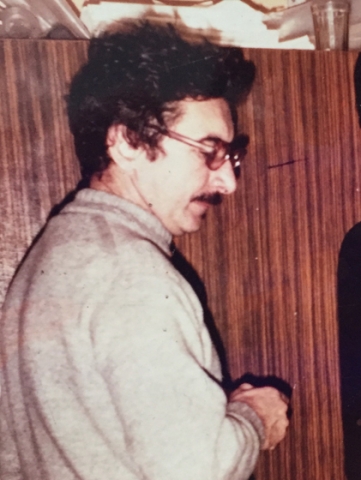Italian physicist Guido Vegni passed away on Thursday, 2 June. With his death we have lost a friend, an excellent physicist and a strong supporter of the CERN programme.
His long and fruitful involvement in particle physics started in the mid 1950s, when he joined the Milan nuclear emulsion group led by Giuseppe Occhialini in 1956. His thesis aimed to measure the spin-parity assignment of the K+ meson from its decay into three pions, contributing to the study of the famous “tau-theta puzzle’’, eventually solved by the discovery of the non-conservation of parity in weak interactions. In 1960, Guido was appointed “Assistant’’ to Professor G. Occhialini in Milan, the first step of a career that led to him eventually becoming the Chair of Elementary Particle Physics, a position he held until his retirement in 2006.
From 1963 to 1966, as a CERN Fellow, he joined the CERN, Ecole Polytechnique de Paris, Orsay, Milan and Saclay experiment using the Saclay 81 cm bubble chamber, and participated in the discovery of the ρ3(1690) (otherwise known as the g-meson).
At the end of the 1960s, a “live’’ target was built by the Milan group and used for the first time in an experiment (CERN, IC London, Milan and ETH Zurich) to study the diffractive dissociation of mesonic states on different kinds of nuclei. This target, composed of silicon detectors, measured the deposited energy to verify that a reaction had happened there. In the 1970s, Guido took part, within a collaboration formed between Dubna, Milan and Bologna, in several experiments at the Serpukhov accelerator, using a large magnetic spectrometer. Their “live’’ target allowed the detailed study of several states produced diffractively in the interactions of 40 GeV/c π- on nuclear targets. The major results were the observations of two states, π(1300) and π(1800), interpreted as radial excitation of the pion.
At the beginning of the 1980s, this technique evolved into a “beauty decay detector” based on a telescope of planar sensors at the CERN-WA71 experiment; while at the start of the LEP era, Guido and his group moved to the DELPHI experiment, where they contributed significantly to the silicon microvertex detector, playing a pioneering role. Guido led a team that joined the collaboration in its early days, and remained right up until the commissioning of the final upgrade, which integrated pixel detectors in a collider experiment for the first time ever.
After LEP, his interest turned to the LHC and he became an enthusiastic supporter of the ATLAS experiment. He led the Milan group engaged in the design and construction of the ATLAS silicon pixel detector and made significant contributions to this effort.
Alongside his research, Guido was a passionate teacher and educator and motivated a number of his students to start careers in research. He was convinced of the need to improve the quality of science teaching from primary school onwards. He promoted a highly succesful training course for physics educators, relying on tools that anticipated the internet and the IT revolution.
Our warmest sympathy goes to his wife Anita, his daughters Isabella and Giulia and his son Ferdinando, together with their families.
We will all miss Guido sorely.
His friends and colleagues

